
Admiring Interpretive Excellence
When I go places, I’m judgmental. It’s hard not to be - when your passion is public communication it means that every piece of public communication you see gets processed through a framework of, “how would I have done that differently?”
That doesn’t mean I don’t enjoy myself - I’ve seen plenty of interpretive experiences that shone brightly as examples of welcoming visitors in to think deeply on who they are and how they fit in society. This collection includes a few of the amazing experiences which have inspired me to think about interpretive possibilities in new and meaningful ways.
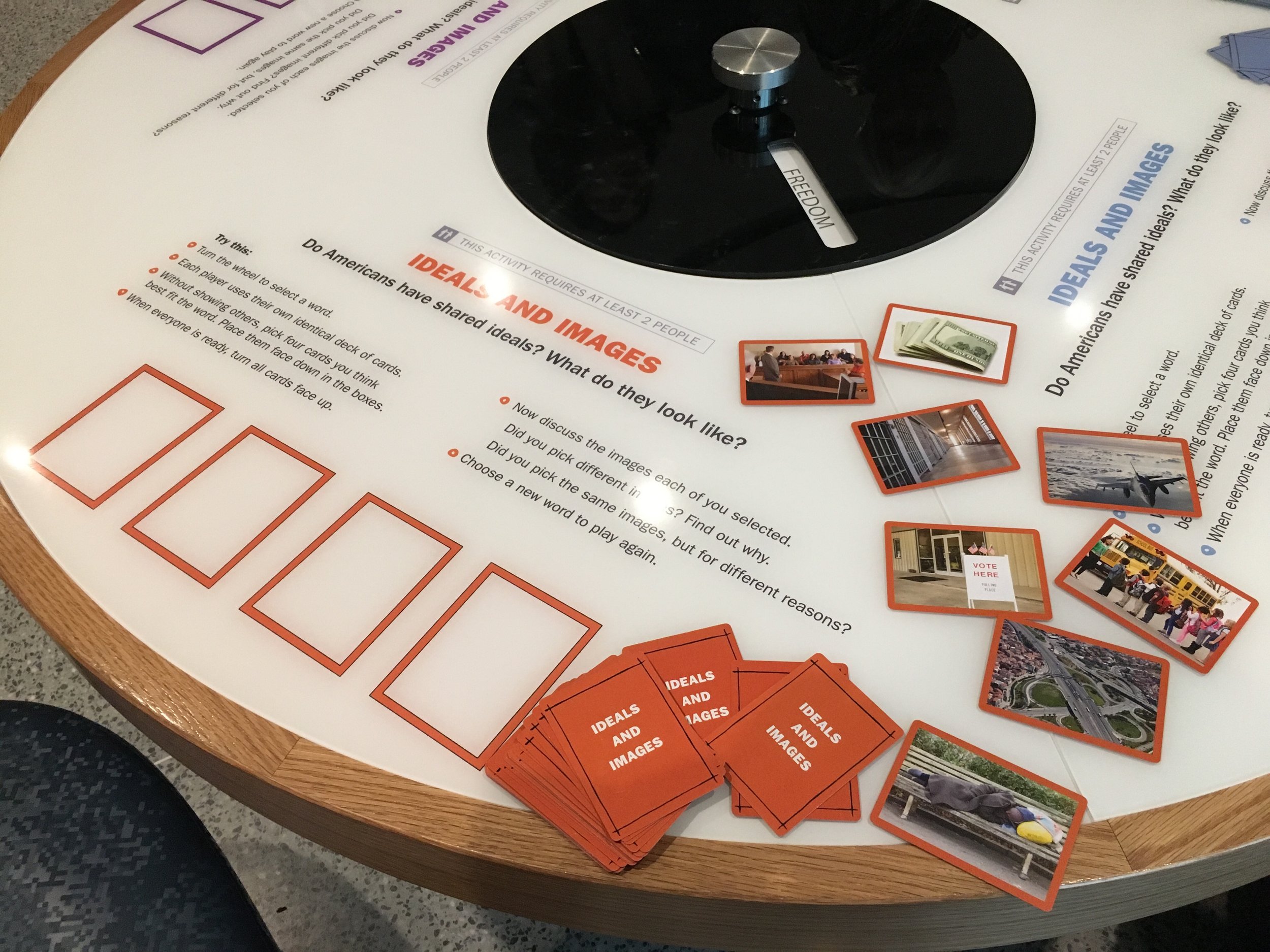
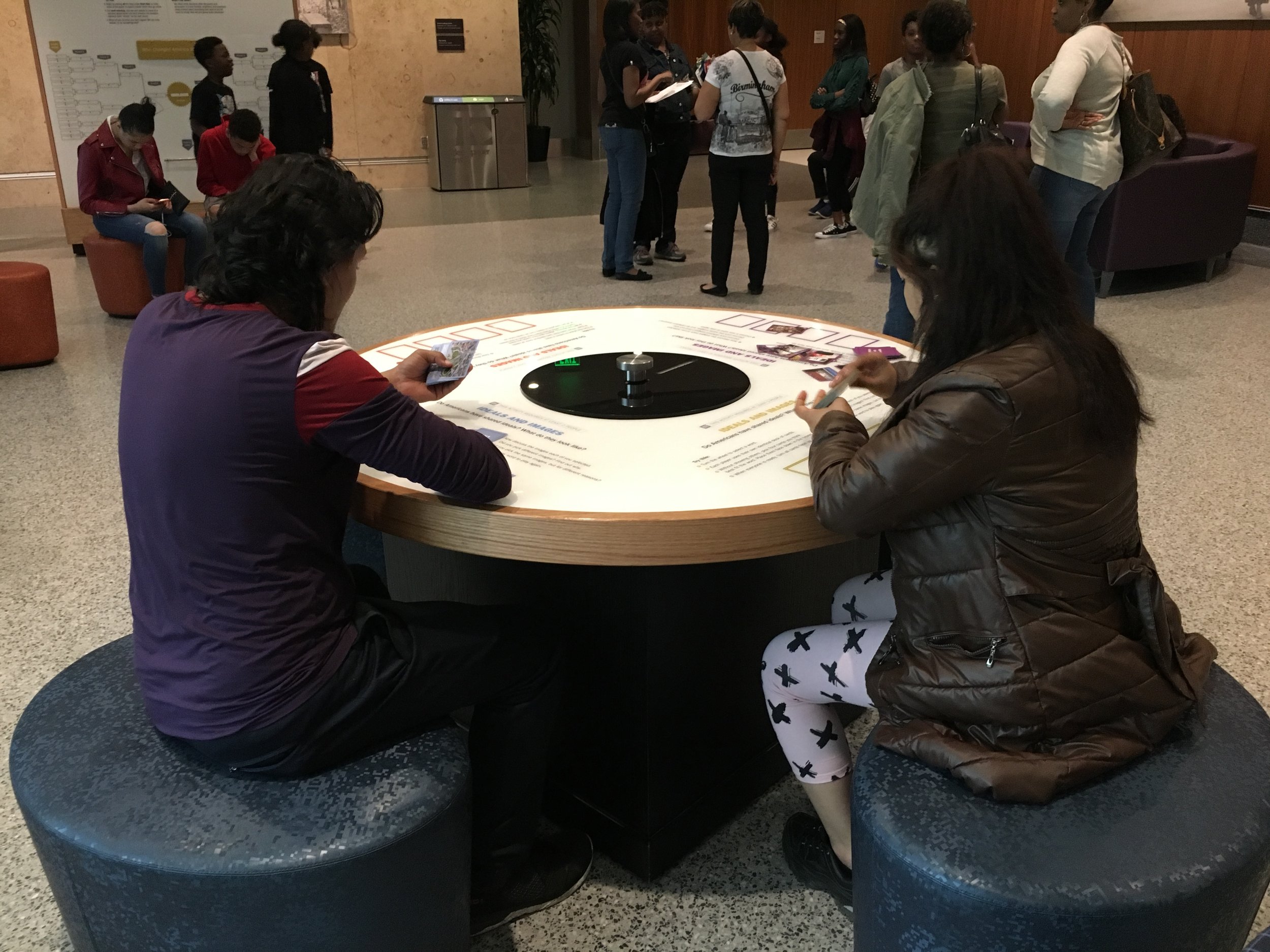

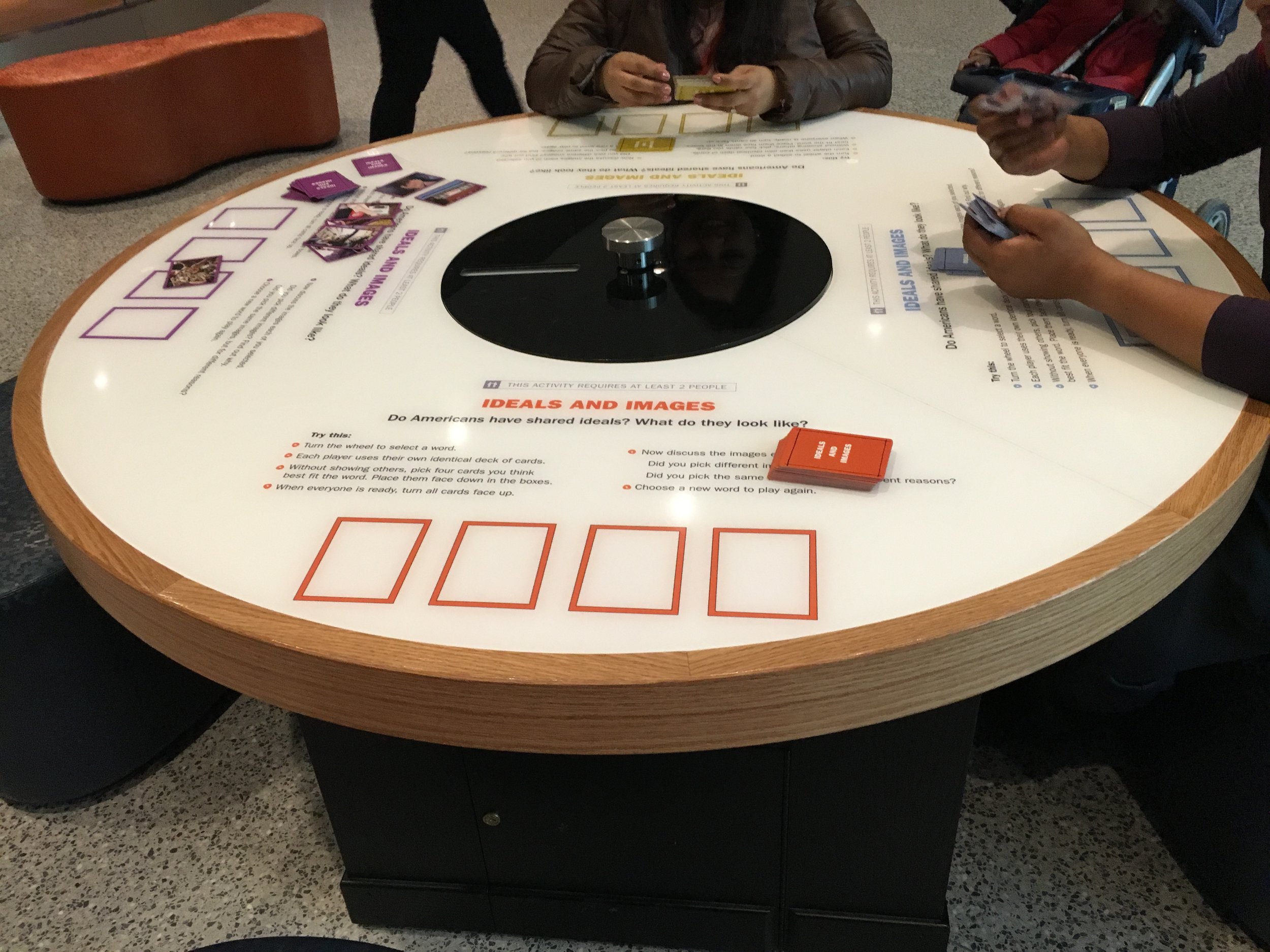

“American Experiments”
National Museum of American History
Washington, DC
On the museum’s second floor are a series of exhibits in an area called “Unity Square.” These simple opportunities focus on getting social groups and families to interact and engage.
One table is a modification of a technique called “Photolanguage” - originally pioneered by French priest Alain Baptiste. Decks of card are available to peruse. Participants each grab a station and spin the wheel to a concept - then choose the photos they think best represent it.
"Now discuss the images each of you selected," the table instructs visitors, "Did you pick different images? Find out why."
What Does It Show Us?
We often think of audience engagement as something which requires tons of guidance and handholding. But with a bit of creativity, even “labor intensive” activities like a conversation facilitated through photolanguage can be sparked with a few simple tools and no staff guidance.
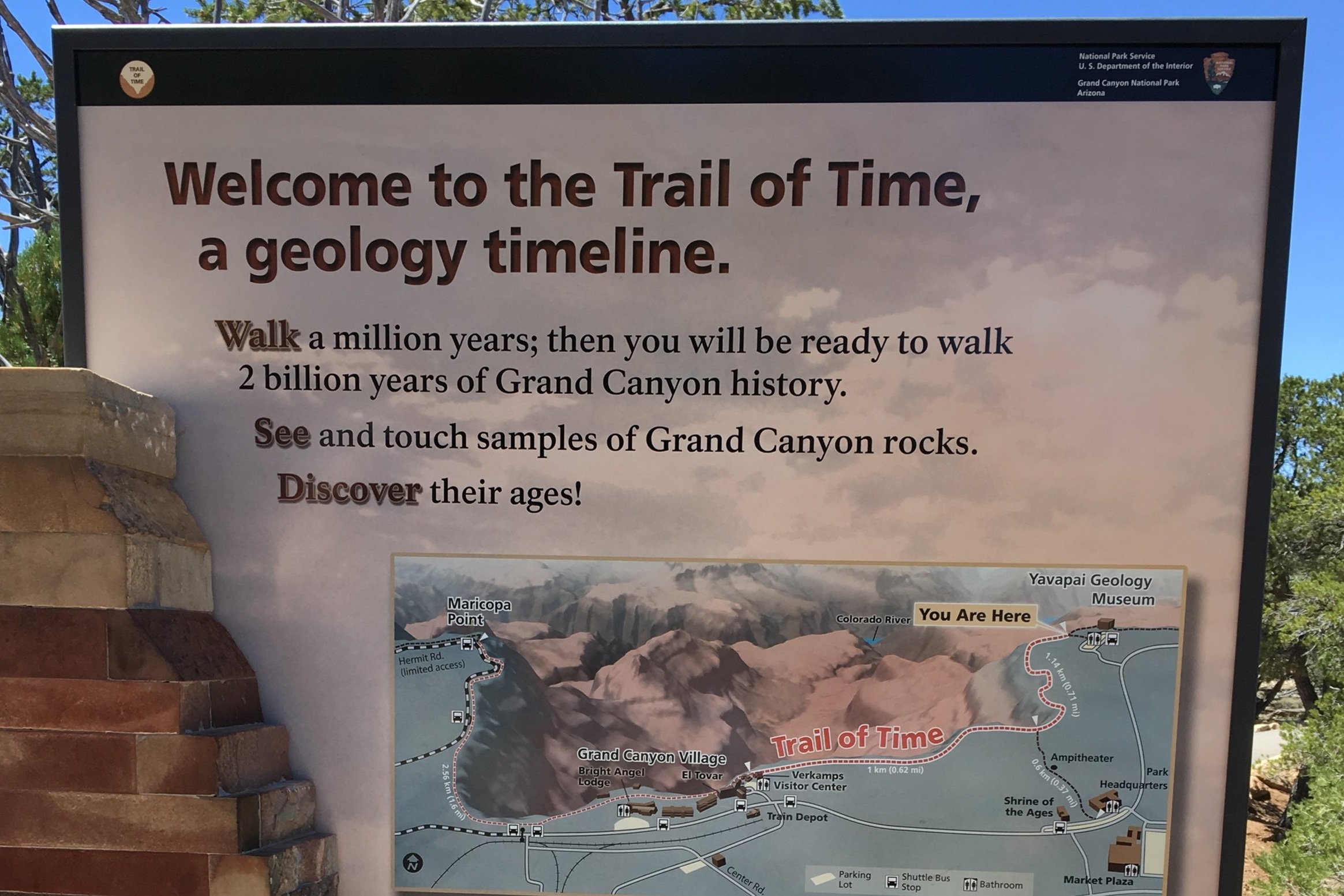
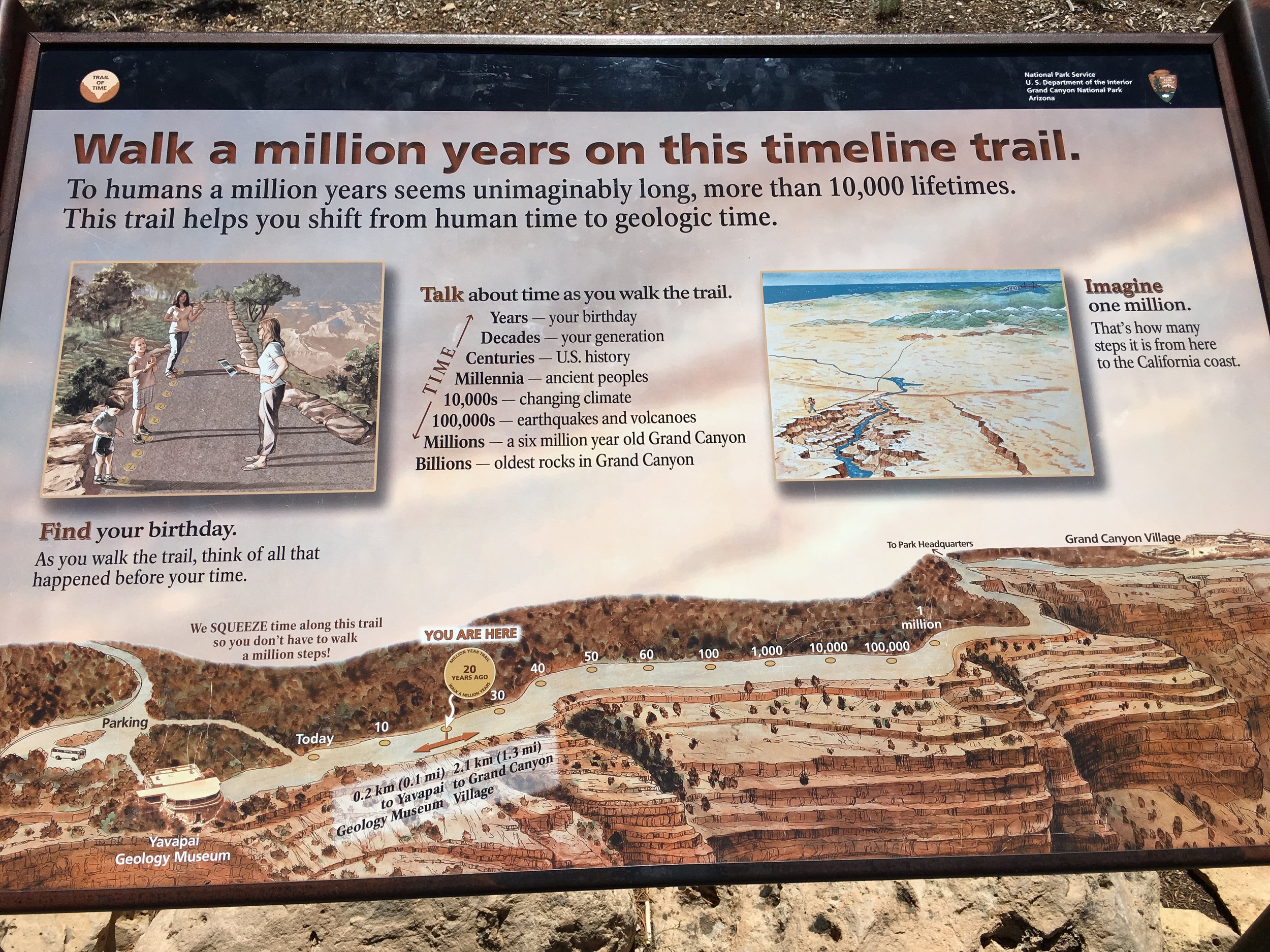
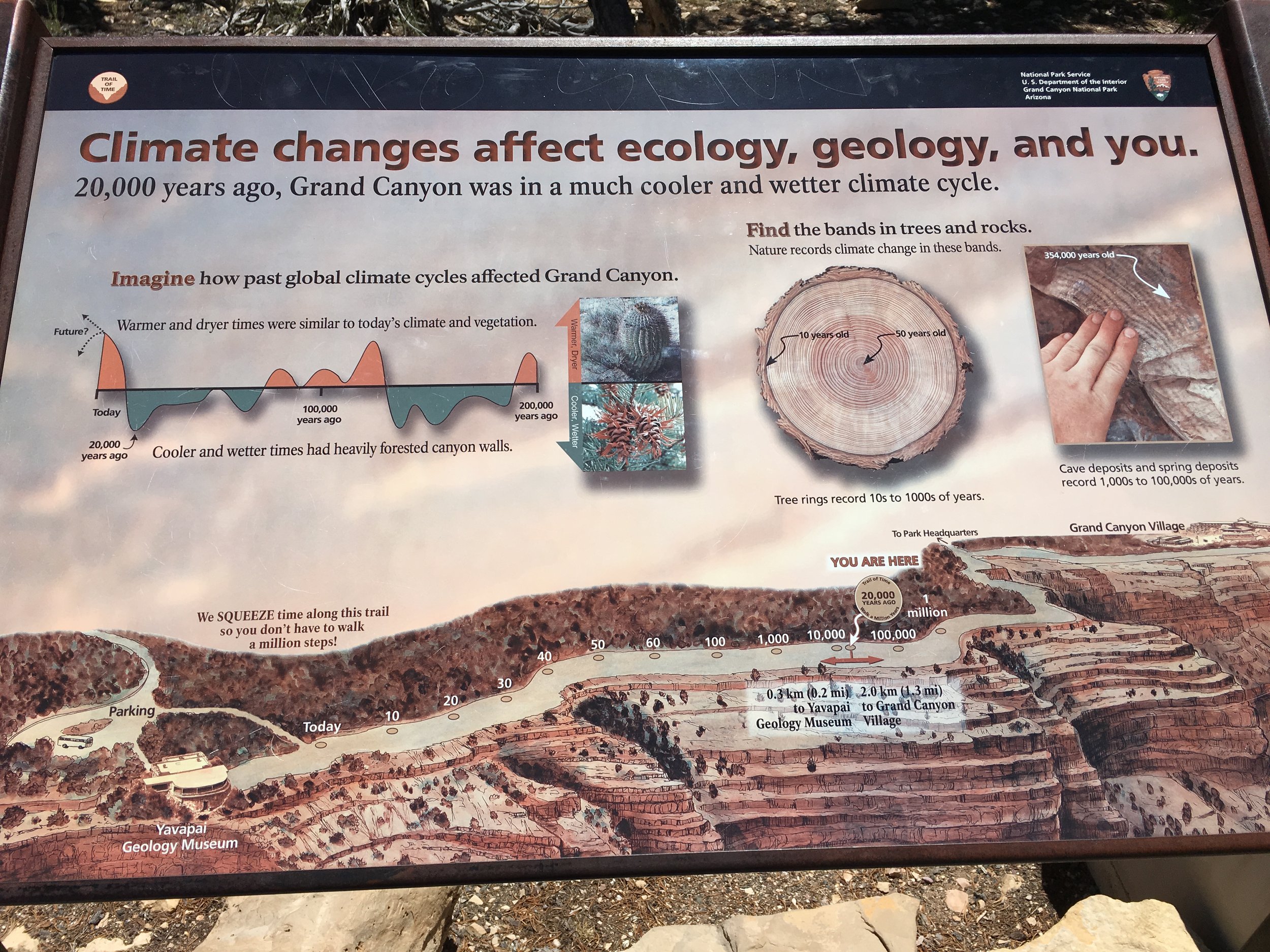
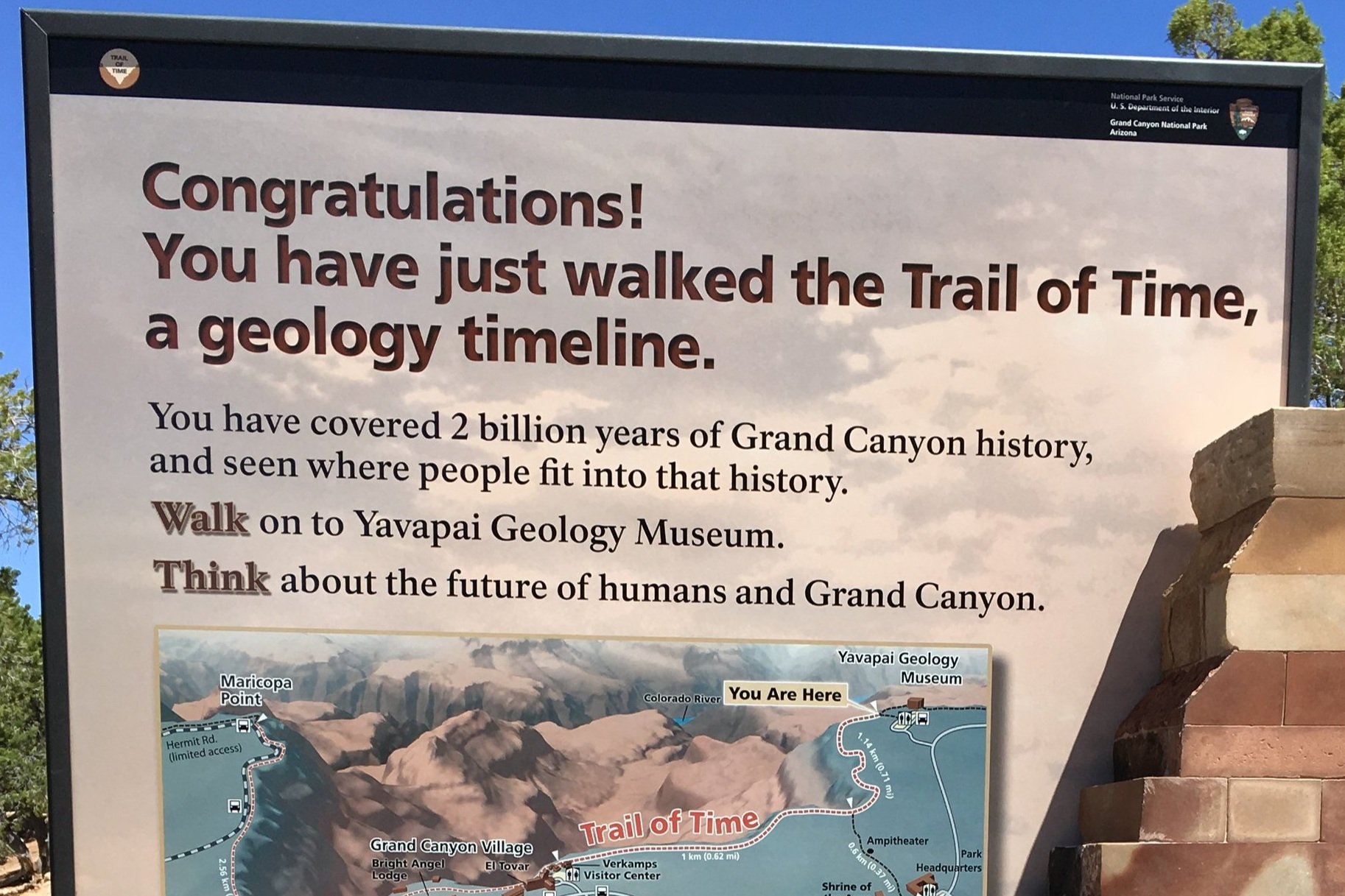
“The Trail of Time”
Grand Canyon National Park
Arizona
On the South Rim of the canyon, this geology walk makes time a tactile experience - with bronze markers sunk into the ground to help visualize the immensity of eternity.
The signage is quite different than “normal” wayside - these have novel instructions beyond “read”. Some tell you to touch things. Others tell you to “Imagine,” “Think,” or “Talk.”
When I was visiting with a coworker of a different generation and life experience, one of those simple prompts told us to stand on our birthdays. It sparked a conversation about how we always feel so far apart. But in the vast sense of time, we were both born in the same moment.
What Does It Show Us?
Waysides and site bulleting - the tactile media of parks - have always felt didactic to me. They only allow for information to flow one direction. But these waysides do more - they intentionally spark experience and sharing in ways far beyond old-school “authoritative text” and simple factual recitation.
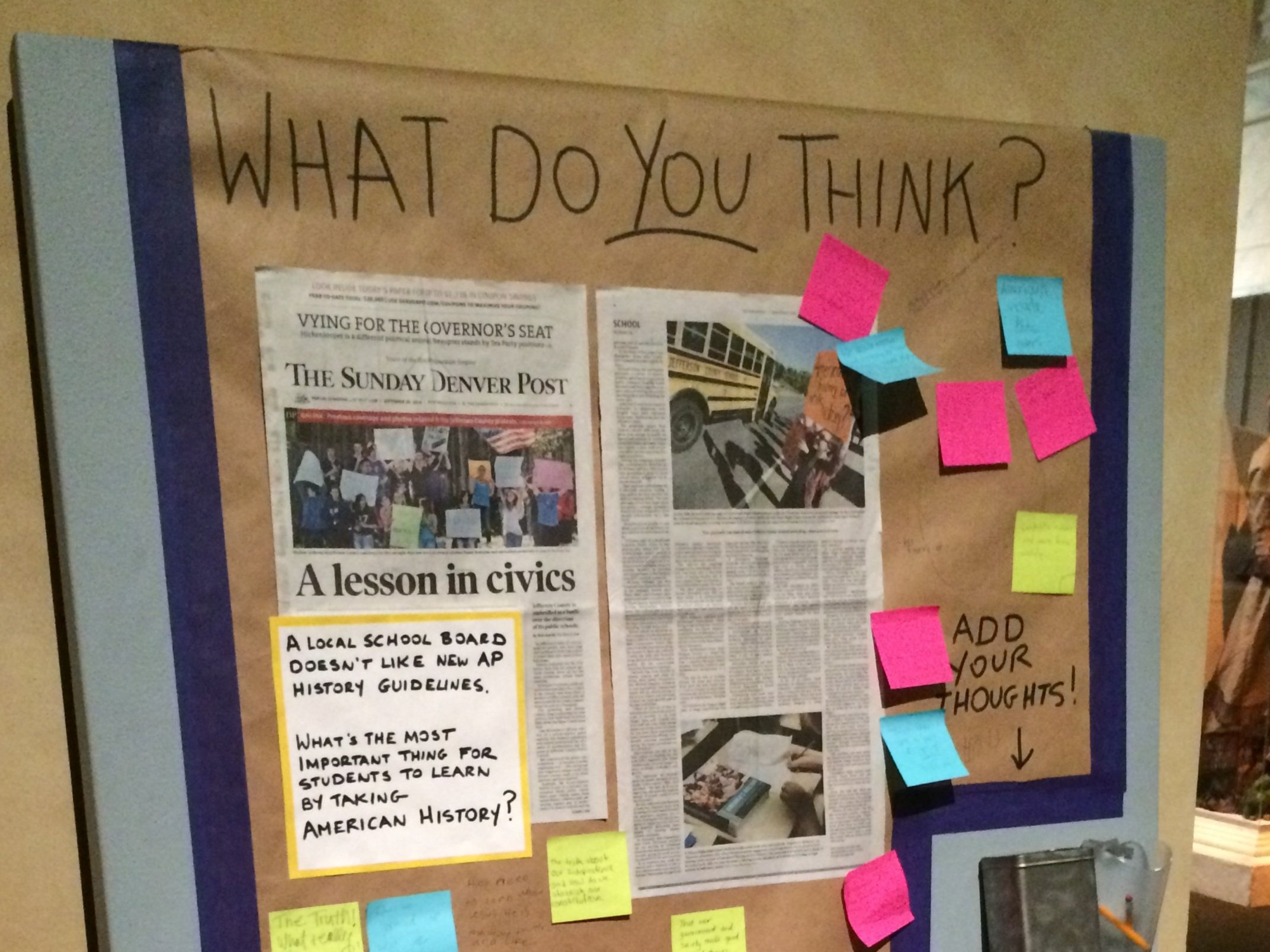

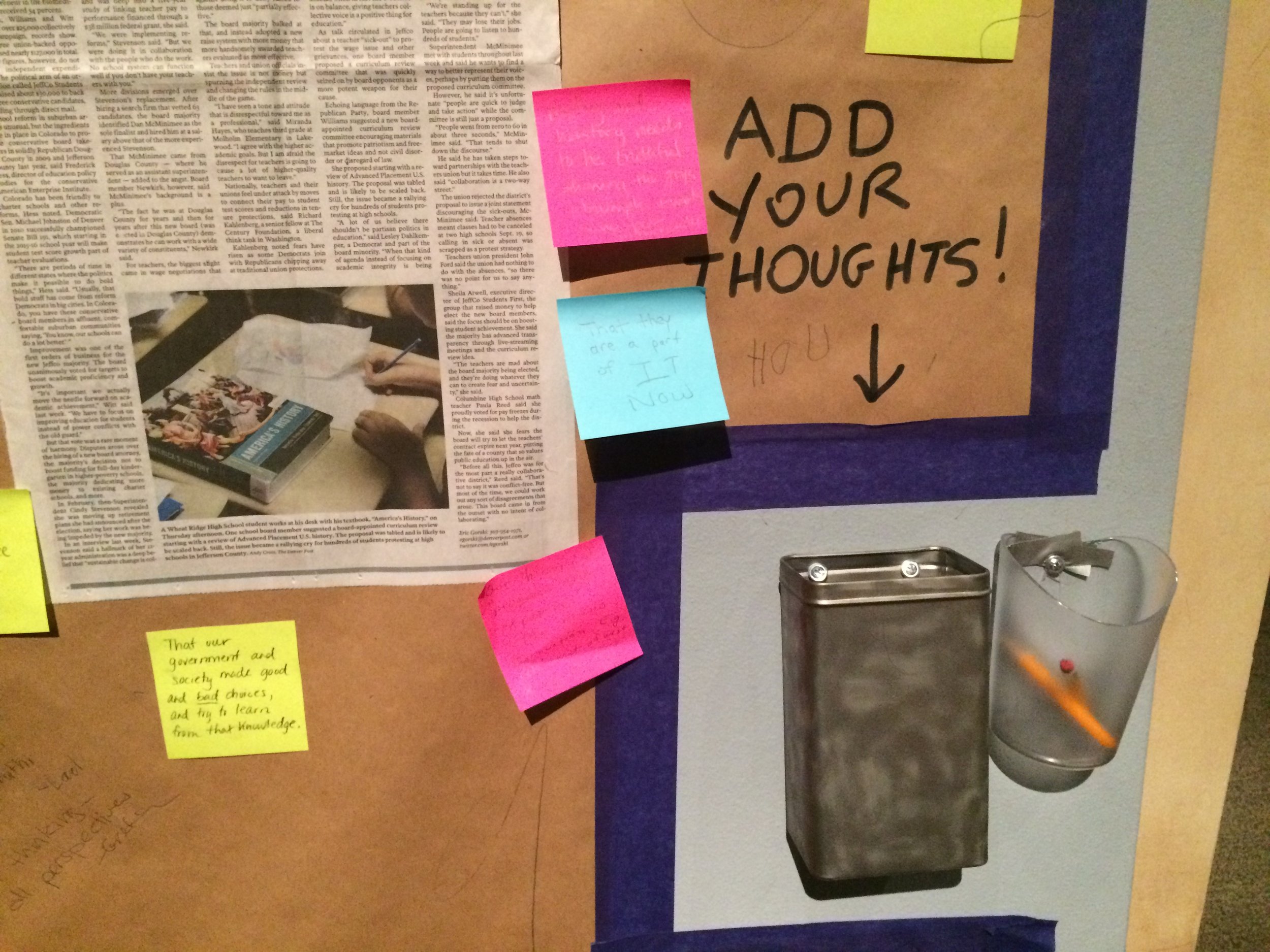



“What Do You Think?” Pop-Up
History Colorado
Denver, Colorado
In an upper floor gallery of the historical museum, a large chunk of particle board leaned against a well unceremoniously. It was covered with butcher paper and had a recent newspaper article on a debate over civics education standards taped up.
It was obviously handmade - pulled together from the tools that were available in the back rooms and hallways of the museum. A tin and a cup were each haphazardly screwed to the board to hold pencils. The prompts and instructions were all handwritten: “What do you think?” the board asked. "What's the most important thing for student to learn by taking American history?"
What Does It Show Us?
It might feel unseemly to a museum administrator - to have something so “unprofessional” looking in the middle of an exhibit. But the handmade energy of this board - the immediacy and curiosity that the effort put into its construction showed - made it MORE exciting to answer. Polished isn’t always the answer; it’s OK to put out works in progress and learn from them.
“One Minute Challenge”
Grand Canyon National Park
Arizona
During an Audience Centered Experience class at the Grand Canyon, one of our participants got excited to try out the techniques we were sharing. Remembering an empty wayside near the rim of the canyon, she grabbed a large piece of paper early in the morning and headed out before class.
On the paper she wrote: “The One-Minute Challenge - Don't talk, no photos, just look... and see. What did you feel?” It was a true experiment. She had no idea what would happen.
After lunch, she came back to the classroom triumphant and pinned the piece of paper to the cork board. It was covered with visitors’ thoughts. “Perfect - The Best View” “Praise the Lord” “Freedom! I ❤ it” “Relaxed” “Thirsty” “Privileged”
What Does It Show Us?
Sometimes even when you’re instructing, you can be skeptical of the new ideas you’re passing along. This moment contained two key reminders. When you give visitors a place to express themselves, they will surprise you with how profound and deeply they think about a place. And the skill of curiosity is key - from novice to seasoned pro, anyone can do this work if they’re simply genuinely curious.
